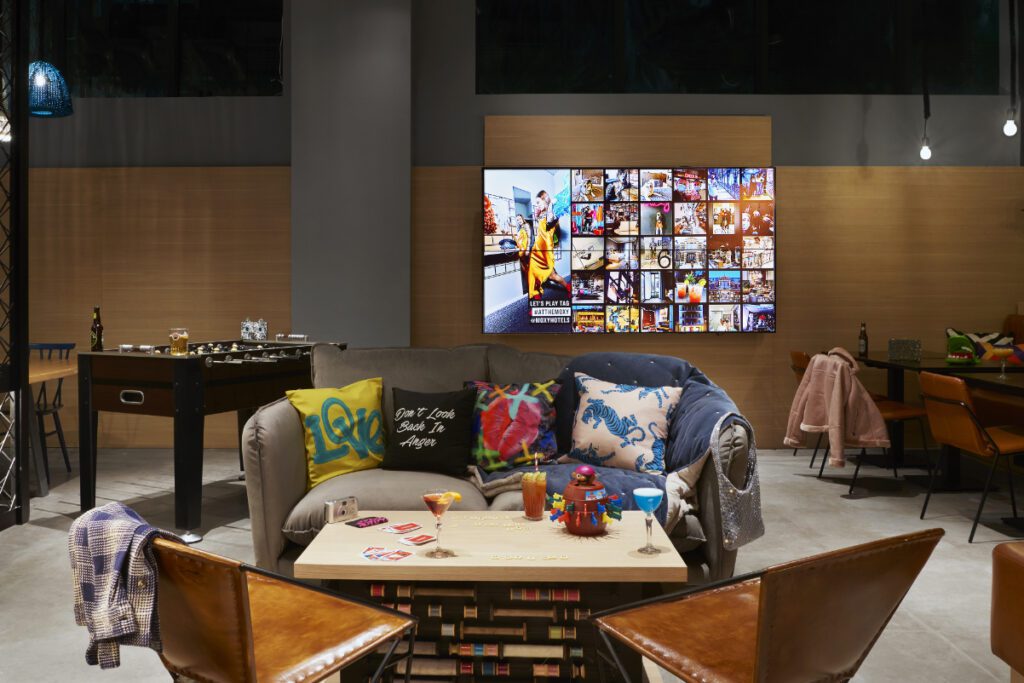
Skift Take
In May 2022, Marriott said it would let non-hotel marketers place ads on its site, lobby TVs, and guest-room Wi-Fi portals. But it’s been largely quiet since then. Here’s an update.
In May 2022, Marriott launched the Marriott Media Network: The goal had been to let non-hotel marketers place ads on the company’s website and app, its marketing messages to guests, and eventually on in-room TVs and digital screens in lobbies.
- Marriott has data that guests provide voluntarily when they join its loyalty program.
- Brands could target their ads in relevant ways, such as to people in a particular geographic area.
- But Marriott would “anonymize” it, so they wouldn’t pass along personally identifiable information, such as email addresses.
Some Analysts Saw Visions of Large Dollar Figures.
- “Plus, the brand can take advantage of a 29% or more net margin for advertising, nearly.”
What Marriott Says Today
- Marriott launched with Yahoo as its partner on the technology side. But a year ago, Yahoo abruptly shut down its so-called server-side provider business for all clients.
- Marriott is currently transitioning to Google as its media network partner.
- “The Marriott Media Network has been in high demand from advertisers,” said Nicolette Harper, global vice president of Media.
- “However, it is paramount that we execute logically so that the content being delivered is valuable to our guests and enhances their interactions and experience with Marriott,” Harper said. “Therefore, we have been thoughtful in expanding access to content from advertisers on owned channels.”
- In the meantime, a spokesperson said it is “continuing to seamlessly deliver ads on on-property Wi-Fi portals.” These are similarly done in the generic style of Google ads. Examples include local tours and activities, attractions, or theme park tickets. Currently, Marriott.com places an ad unit within its hotel search results that promotes a website for its vacation rental offering.
- “We are considering additional options to run ads in our hotels but want to make sure they are additive to the customer journey,” the spokesperson said. “The guest experience is of paramount importance to us.”
Tricky to Execute?
- An ad exec familiar with Marriott’s effort said, on the condition of anonymity, that these types of media networks are tricky to create. Marriott has two main choices, the exec said. Each has obstacles.
- The easier but less lucrative path is for Marriott to take Google Ad Words or a rival display network and plug it into placements on its brand.com site and hotel TV screens.
- On the plus side, this path is affordable and simple. On the downside, the revenue opportunity is low. “I’d be surprised if they’ll make even a $2 CPM [cost per 1,000 impressions] once they get that going,” they said. “I bet you 10 to 1 they don’t have the scale of inventory to pull it off in a meaningful way.”
- Ad supply is a related problem. What types of advertisers would be interested in specifically paying to reach travelers who are “in-market” or about to be traveling? The most likely ones are other travel brands. However, the bulk of online advertising expenditure today is coming from online travel agencies and other hotel groups. It’s hard to imagine Marriott amplifying Expedia and Hilton messages to its guests and loyalty program members.
- Vetting advertisers is also an issue. If a particular hotel is hosting a convention, for example, the group that booked out a block of rooms might not want the hotel’s lobby screens to be advertising for a competitor or political ads. If a hotel brand generally attracts families, it wouldn’t want to display racy ads. The vetting process could narrow down available ad inventory.
- Option two for Marriott is to go big. Marriott could hire a sales team and go into the market and say I have this great asset with great first-party data and I’m selling them for, say, $30 a CPM. “You’ve got to serve hundreds of millions of pageviews a month to generate enough ad revenue to recoup your opex, etc.,” they said.
- Alternatively, Marriott could focus on its most prestigious brands, like Ritz-Carlton, and JW Marriott, and St Regis. But then it would have to hire salespeople skilled at cracking the ad accounts of watchmakers, makers of haute couture, and the like who would want to reach those high-net-worth guests. Those salespeople wouldn’t be cheap, and they would have to make a plausible case that guests were engaged and responding to the ads.
My Experience Shows a Slow Rollout
- Anecdotally speaking, my stays at a handful of Marriott properties on three continents in the past year haven’t shown any ads for anything other than Marriott itself and its Home and Villas product.
- These Marriott.com ads are generic Google Ads placements. To the extent these ads are somewhat tailored to the viewer, that is only according to what Google knows from a Google user’s logged-in activity and information the user has shared with Google.
- The placements aren’t personalized based on any Marriott Bonvoy loyalty program details. No one is using travelers’ past searches and bookings made on Marriott channels to inform these ad placements, for example. Yet those were the things that were touted.
The bottom line: Marriott officials told me to “watch this space” and they believe that, based on “high demand” from advertisers, they will be able to build something compelling for guests and the company’s bottom line.
What do you think? Tell me. I’m at [email protected] and on LinkedIn.
